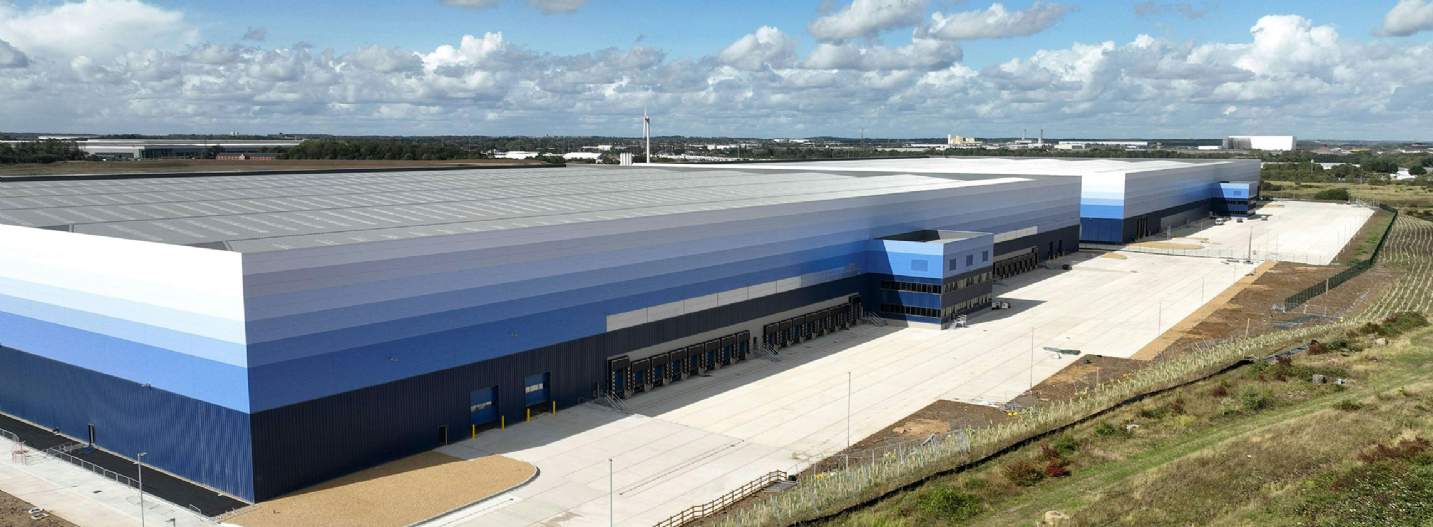Speculative completions and growth in second-hand space increase supply by 26%, yet BTS transactions rise 108% on levels seen in H1 2023

GLP's Magna Park, C Corby, where Savills advised on the disposal of c.600,000 sq ft of speculatively developed space to Bleckmann.
Multiple large second-hand units have returned to the East Midlands market, most of which were built pre-2000. Recent trends suggest these units may remain unoccupied as occupiers prefer top-tier or custom facilities to enhance supply chain resilience. Consequently, Savills’ vacancy rate modelling indicates a higher vacancy rate for a longer period than initially expected, dropping below 6.5% by H1 2025
Ranjit Gill, Director, Birmingham
Supply
A recent increase in completed speculative developments second-hand supply returning to the market has contributed to the rise in vacant warehouse space in the region. Currently, there are 50 available units totalling 11.29m sq ft. The vacancy rate has increased to 8.62%. As long as the vacancy rate remains below 12%, there will be continued rental growth within the region. Savills suggests a prolonged period of higher vacancy rates as second-hand supply is absorbed. Rising requirements, falling development pipelines and continued issues with BTS developments will lead occupiers to acquire existing units.
Closer analysis highlights 37% of the available supply is Grade A speculatively developed space, 30% is second-hand Grade A space, 31% is Grade B space, and 2% is Grade C space. In terms of unit count, there are 27 units between 100,000–200,000 sq ft, eleven between 200,000–300,000 sq ft, nine between 300,000–400,000 sq ft, one between 400,000–500,000 sq ft, and two over 500,000 sq ft.
Take-up
Take-up in 2023 reached 8.12m sq ft across 26 transactions – a 33% increase above the long-term annual average. In 2024, occupier activity has rebounded further, with take-up already reaching 5.02m sq ft across eleven transactions – an 87% increase above the long-term H1 average.
Analysis of transactional activity by specification shows a clear preference for larger, highly specified units, with 63% of space transacted in H1 2024 being BTS space, 34% being speculatively developed space, and just 3% being second-hand space. Our requirements index supports the demand for best-in-class quality buildings, particularly those with top ESG credentials.
By unit count, there have been five transactions within the 100,000– 200,000 sq ft size band, one within the 300,000–400,000 sq ft size band, two within the 400,000–500,000 sq ft size band, and three over 500,000 sq ft. As economic certainty returns to the wider UK market, occupiers continue to choose the Golden Triangle as their preferred location for large national distribution centres. Third-party logistics firms have dominated take-up, accounting for 50% of activity, followed by high street retailers at 28%, and wholesalers at 8%.
Development pipeline
The development pipeline has decreased by 47% in the last twelve months, which will help keep the vacancy rate lower and allow for further rental growth. There are now six units under construction, totaling 1.96m sq ft, 26% of which is under offer.
